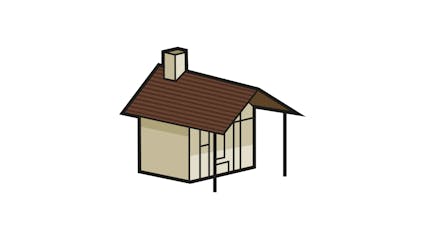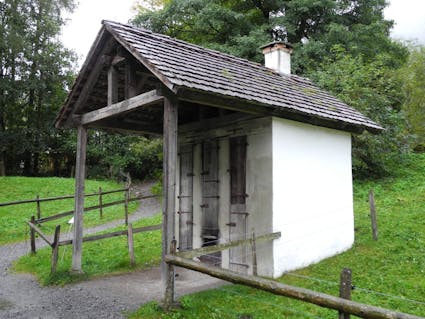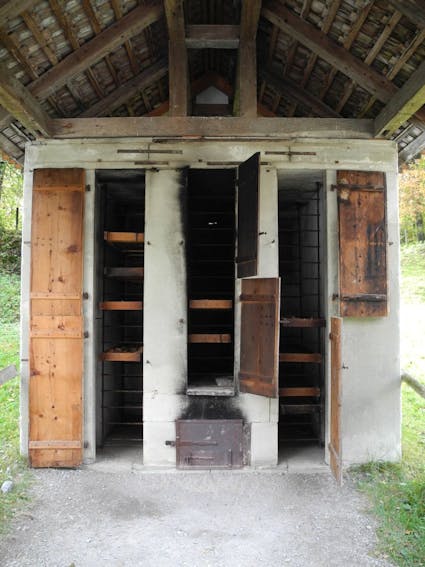713 – Drying Oven from Alpnachstad OW, 1870
This drying oven has three drying chambers with forty shelves: room for hundreds of sliced fruits.

Fruit Orchard
In many parts of Lucerne and Central Switzerland apple and pear trees help defi ne the landscape. Pastries with pears and other fruit are regional specialties. Preserves and alcoholic beverages are long-lasting – so are dried fruits like cherries, plums and sloes, even apricots and peaches, chestnuts and figs. Canton Obwald was praised as a blossoming fruit garden.
Part of the Whole
This drying oven has three drying chambers with forty shelves: room for hundreds of sliced fruits. Apples and pears were cut in half or in eight wedges, placed on wooden grids and slid into the drying space. The drying oven stood next to the farmhouse and formed together with granary, stall and barn the farm “Rothenbächli”.

Clever System
Drying ovens were generally small structures similar to the drying oven from Brienzwiler (1032) – this drying house is more refined. Smoke and heat pass through a labyrinth of ducts, like a convoluted staircase, and heat the chamber walls. Dampers on the rear side of the building regulate the draft in the heating ducts.

Heat Wave
Bury in sand, store in a cooling cellar, boil in glass jars or hang in smoke – there were many ways of preserving the foodstuffs provided by the harvest or slaughter. The moment was brief, the year until the next harvest was long. Heat treatment in the drying oven helped to sweeten the winter.
Ballenberg
Swiss Open-Air Museum
Museumsstrasse 100
CH-3858 Hofstetten bei Brienz
Company holidays
24 December 2025 to 11 January 2026
Opening hours Administration
3 November 2025 to 8 April 2026
From Monday to Friday
8.30 am to 11.30 am
1.30 pm to 4.30 pm
Opening hours
9 April to 1 November 2026
10 am to 5 pm daily